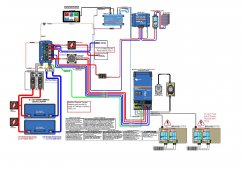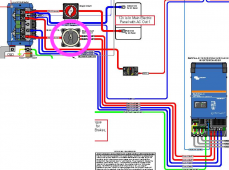No diagrams, don't know how to draw one.

I do everything in my head, I had to see a neurophysc doctor once and he told me that my cognitive memory and ability is up at genius level. One test he said no one ever gets it right but I had a perfect score until the very end and the last line I drew was ever so slightly crooked and he had to ding me a point. He admitted he knew I was just in a hurry.

Basically, battery positive goes to the main fuse, then to the 300a master switch. From there to a main busbar, then a fuse panel is provided power from that busbar. Took one fuse slot and wired it to the push button with a 50 ohm resistor in the circuit, wire exiting push button goes to 24V circuit breaker output terminal that is hooked to Growatt.
Power to circuit breaker is from the positive busbar. I have circuit breaker open, hit the button a few times, then turn on circuit breaker. This only needs to be done if either the main disconnect switch is throw or the circuit breaker is opened.
Basically, the circuit is just like this one I found.
https://diysolarforum.com/threads/m...ll-for-the-sw-4024-inverter.20426/post-238828
It doesn't matter where the resistor is in the circuit, it can be before or after the push button.





